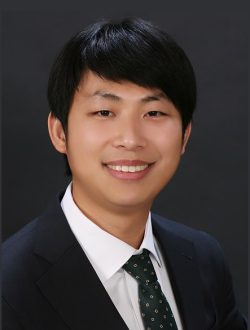Biography
Sangkil Kim (Senior Member, IEEE) is currently a Faculty Member in the Department of Electronics Engineering at Pusan National University in Busan, Republic of Korea. He received his B.S. degree (magna cum laude) from the School of Electrical and Electronics Engineering at Yonsei University in Seoul, Republic of Korea, in 2010. He then earned his M.S. and Ph.D. degrees from the School of Electrical and Computer Engineering at Georgia Institute of Technology in Atlanta, USA, in 2012 and 2014, respectively. From 2015 to 2018, Dr. Kim worked as a Senior Engineer in the RFIC Design group at Qualcomm, Inc. in San Diego, CA, USA. He has published 53 articles in peer-reviewed journals and five book chapters, and his current research interests include mmWave phased antenna array, machine learning-assisted backscattering communication, RF biosensors, energy harvesting, and printed RF electronics. Dr. Kim is a member of the IEEE MTT-26 RFID, Wireless Sensors, and IoT Committee. In recognition of his research contributions, he has received several awards, including the IET Premium Award Microwave, Antennas & Propagation in 2015 and KIEES Young Researcher Award in 2019.
Presentations
Improved I/Q-load Modulator Modeling for Fast Backscattering Communication Through Transfer Learning Technique
Abstract: In this talk, the operation principle, architecture, and machine learning techniques used in low-power backscattering communication systems are presented. The simple I/Q load modulator, consisting of two transistors, is a popular choice for backscattering communications due to its low power consumption and simple structure. However, accurately modeling the load modulator is critical for designing efficient backscattering load modulation tags. Conventional design approaches based on a simple parametric transistor model can lead to errors due to thermal or environmental noise sources. To achieve accurate higher-order modulation schemes, these errors must be corrected and precisely modeled. An active circuit modeling technique-based ANN-based transfer learning approach, where a pre-trained ANN model is built based on gate bias and reflection coefficients through simulation, is discussed as well. Then, transfer learning is applied to create a more accurate transistor model. This technique prevents overfitting for small numbers of measurement datasets, resulting in a modeled transistor that provides 0.81% EVM in reflection coefficient estimation. Finally, an optimal algorithm for controlling the designed load modulator for QAM based on the accurate I/Q modulator model is presented. This talk will provide insights into the design of low-power backscattering systems and highlight the importance of accurate load modulator modeling in achieving higher-order modulation schemes.
